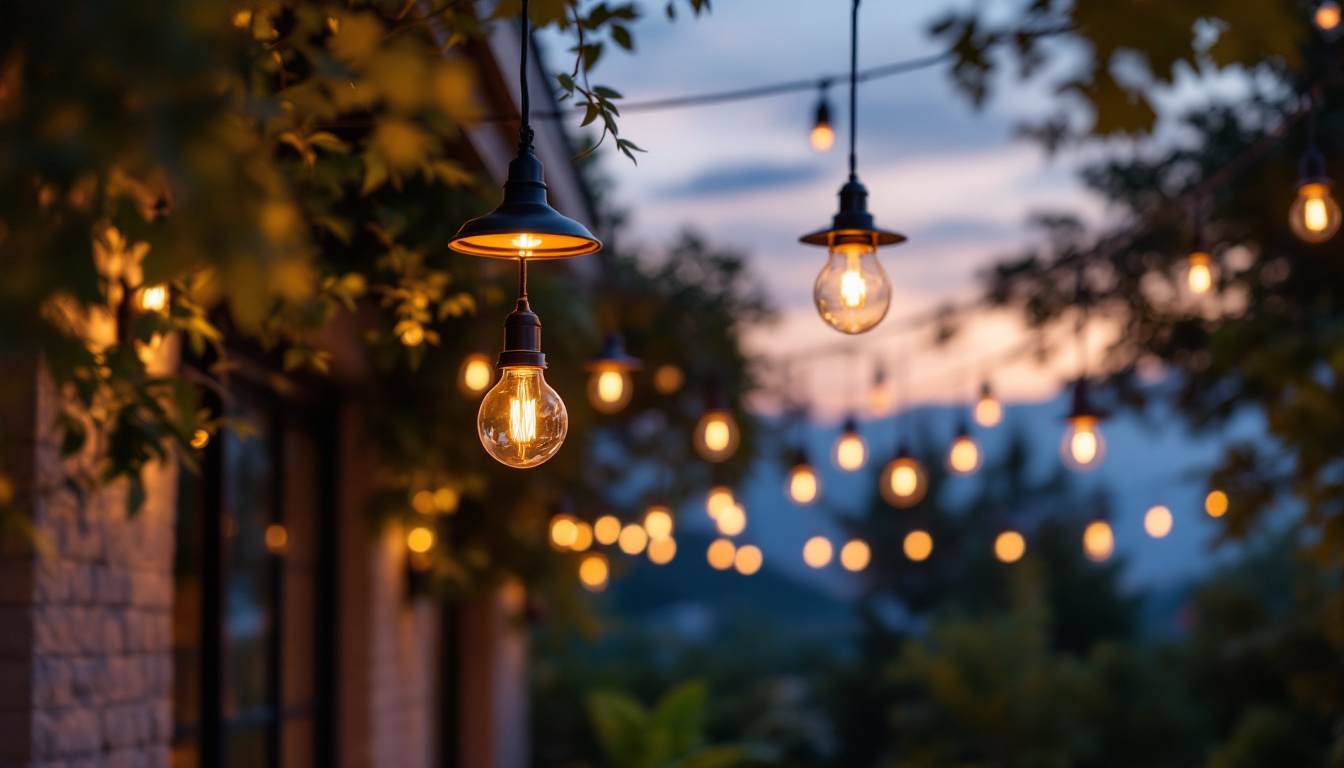
As outdoor spaces become increasingly popular for both residential and commercial applications, the demand for effective and aesthetically pleasing lighting solutions has surged. External hanging lights not only enhance the ambiance of outdoor areas but also serve functional purposes such as safety and navigation. For lighting professionals, understanding the ins and outs of external hanging lights is crucial. This article provides an essential checklist to ensure that every aspect of the installation and maintenance process is covered.
Before diving into the specifics, it is important to grasp the fundamental principles of external hanging lights. These fixtures come in various styles, sizes, and functionalities, making them suitable for a wide range of applications. Whether you are looking to illuminate a cozy backyard gathering or enhance the charm of a commercial outdoor space, understanding the basics will help you make informed decisions.
External hanging lights can be categorized into several types based on their design and intended use. Common types include pendant lights, lanterns, and string lights. Each type offers unique characteristics that can enhance the overall aesthetic of an outdoor space. For instance, pendant lights are often designed with intricate details and can serve as a focal point, drawing attention to specific areas such as dining tables or lounge spaces.
Pendant lights are often used in dining areas or patios, providing direct illumination while adding a decorative touch. Lanterns, on the other hand, can create a warm, inviting atmosphere and are often used in garden pathways or around seating areas. Their soft glow can transform a simple outdoor space into a magical retreat, especially on cool evenings. String lights are popular for their versatility and can be draped across spaces to create a festive ambiance. They are perfect for celebrations, adding a whimsical touch to any gathering, and can be easily installed and removed, making them a favorite for seasonal events.
When selecting external hanging lights, several key features should be taken into account. These include the material, IP rating, and energy efficiency. The material affects both durability and aesthetics; for instance, aluminum and stainless steel are popular choices for their resistance to corrosion. Additionally, glass and plastic options can offer unique visual appeal, with frosted or colored finishes that diffuse light beautifully.
The Ingress Protection (IP) rating indicates how well the fixture can withstand dust and moisture. A higher IP rating is essential for outdoor use, ensuring longevity and safety. Additionally, energy-efficient options such as LED lights not only reduce electricity costs but also contribute to environmental sustainability. Many modern external hanging lights now come with smart technology features, allowing users to control brightness and color temperature via mobile apps, further enhancing the customization of outdoor lighting. This integration of technology not only adds convenience but also allows homeowners to create the perfect atmosphere for any occasion, from lively parties to serene evenings under the stars.
Proper planning is vital for the successful installation of external hanging lights. This phase involves assessing the space, determining the number of fixtures needed, and ensuring compliance with local regulations.
Before installation, a thorough assessment of the outdoor space is necessary. Consider factors such as the layout, existing structures, and the overall design theme. Understanding how the area will be used—whether for entertaining, relaxing, or navigating—will significantly influence the choice of lighting fixtures.
Take note of any potential obstacles, such as trees or buildings, that may obstruct light distribution. This assessment will help in determining the optimal placement and height for the hanging lights, ensuring that they provide adequate illumination without creating harsh shadows.
Once the space has been assessed, calculating the number of fixtures required becomes essential. This involves considering the lumen output needed for the area. A well-lit outdoor space typically requires about 100 lumens per square foot, but this can vary based on the intended use.
Additionally, the distance between fixtures should be planned carefully. For instance, pendant lights may need to be spaced closer together in dining areas to provide focused illumination, while string lights can be spaced further apart for a more ambient effect.
The installation process for external hanging lights involves several steps, each requiring careful attention to detail. Following a systematic approach can help ensure safety and functionality.
Before beginning the installation, it is crucial to gather all necessary tools and materials. This may include a drill, ladder, wire strippers, and electrical tape, among others. Having everything on hand will streamline the process and minimize disruptions.
Additionally, ensure that the chosen fixtures come with the appropriate mounting hardware. If not, it may be necessary to purchase compatible brackets or hooks to secure the lights properly.
Safety should always be a priority during installation. Ensure that power to the area is turned off before starting any electrical work. Using insulated tools can further reduce the risk of electrical shock.
When working at heights, such as when installing pendant lights, it is essential to use a sturdy ladder and to have a second person present to assist if needed. Proper safety gear, including gloves and goggles, should also be worn to protect against potential hazards.
Wiring and electrical considerations are critical components of the installation process. Proper wiring ensures that the lights function correctly and safely.
Familiarity with local electrical codes is vital when wiring external hanging lights. These codes dictate the types of wiring and connections that are permissible, ensuring safety and compliance. Typically, outdoor wiring should be rated for wet locations to withstand exposure to moisture.
When running wiring, it is important to avoid running it through areas that may become wet or damp. Using conduit can provide additional protection and ensure that wiring remains intact over time.
Once the wiring is in place, the next step is connecting the lights. This involves stripping the ends of the wires and securely connecting them to the fixture’s terminals. It is important to follow the manufacturer’s instructions to ensure proper connections.
After all connections are made, it is advisable to test the lights before finalizing the installation. This allows for the identification of any issues that may need to be addressed before the project is completed.
After installation, ongoing maintenance is essential to keep external hanging lights functioning optimally. Regular upkeep can extend the lifespan of the fixtures and maintain their aesthetic appeal.
Conducting routine inspections of the lighting fixtures is an important part of maintenance. Check for any signs of wear or damage, such as frayed wires or rust on metal components. Addressing these issues promptly can prevent more significant problems down the line.
Additionally, cleaning the fixtures regularly can help maintain their brightness and appearance. Dust, dirt, and debris can accumulate over time, diminishing the effectiveness of the lights. A simple wipe down with a damp cloth can often suffice, but more thorough cleaning may be necessary depending on the environment.
As with any lighting fixture, bulbs will eventually need to be replaced. Keeping a stock of replacement bulbs on hand can facilitate quick repairs and minimize downtime. When replacing bulbs, ensure that the new ones are compatible with the fixture and meet the necessary wattage requirements.
In some cases, other components may also need replacement, such as sockets or wiring. Being proactive about these replacements can help ensure that the lights remain functional and safe for use.
Beyond functionality, external hanging lights play a significant role in enhancing the aesthetics of outdoor spaces. Thoughtful design choices can transform an ordinary area into an inviting and visually appealing environment.
Selecting the right style of hanging lights is essential for achieving the desired ambiance. Consider the overall theme of the outdoor space—whether it is modern, rustic, or traditional—and choose fixtures that complement this design.
For instance, sleek, minimalist pendant lights may suit a contemporary patio, while ornate lanterns may be better suited for a more traditional garden setting. Mixing and matching styles can also create a unique look, but it is important to maintain a cohesive overall aesthetic.
In addition to selecting the right fixtures, employing various lighting techniques can enhance the overall effect of external hanging lights. Techniques such as layering light, using dimmers, and incorporating accent lighting can create depth and interest in outdoor spaces.
Layering light involves combining different types of lighting—such as ambient, task, and accent—to achieve a balanced and inviting atmosphere. Dimmers can provide flexibility, allowing users to adjust the brightness based on the occasion. Accent lighting can highlight specific features, such as plants or architectural elements, adding to the overall visual appeal.
External hanging lights are a vital component of outdoor lighting design, providing both functionality and aesthetic appeal. For lighting professionals, understanding the various aspects of these fixtures—from selection and installation to maintenance and design techniques—is essential for delivering high-quality results.
By following the checklist outlined in this article, lighting contractors can ensure that they are well-prepared to tackle any project involving external hanging lights. With careful planning, attention to detail, and a commitment to quality, the potential to create stunning outdoor spaces is limitless.
Ready to elevate your outdoor lighting projects with the finest selection of external hanging lights? At LumenWholesale, we’re committed to providing lighting professionals like you with spec-grade lighting products at prices that simply can’t be beaten. Say goodbye to local distributor markups and hello to our extensive, industry-standard collection that promises reliability and high performance. Plus, with free shipping on bulk orders, you can trust that you’re getting premium lighting at the best value — no hidden fees, no compromises. Don’t miss out on the perfect blend of quality, affordability, and convenience. Make your next project shine and explore our wholesale lighting options today.
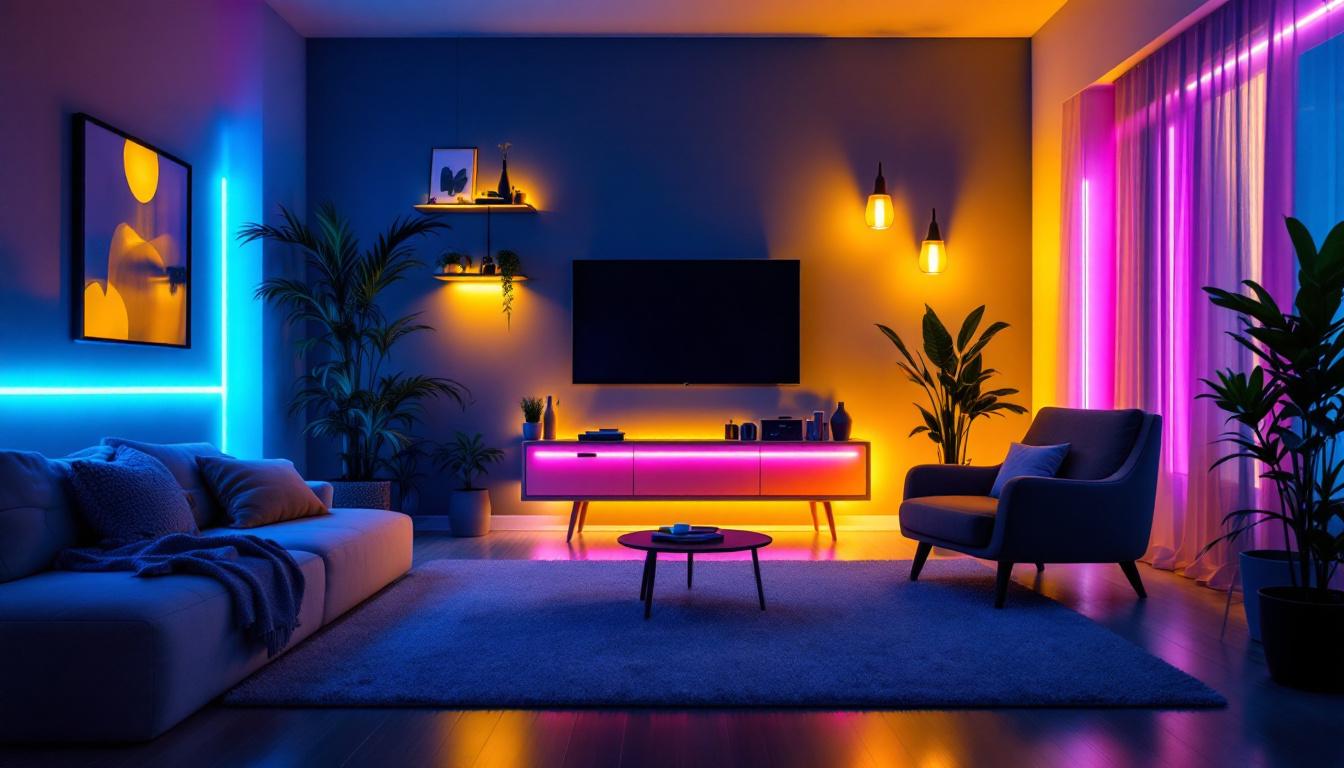
Explore the transformative impact of LED strip lights in contemporary lighting solutions.
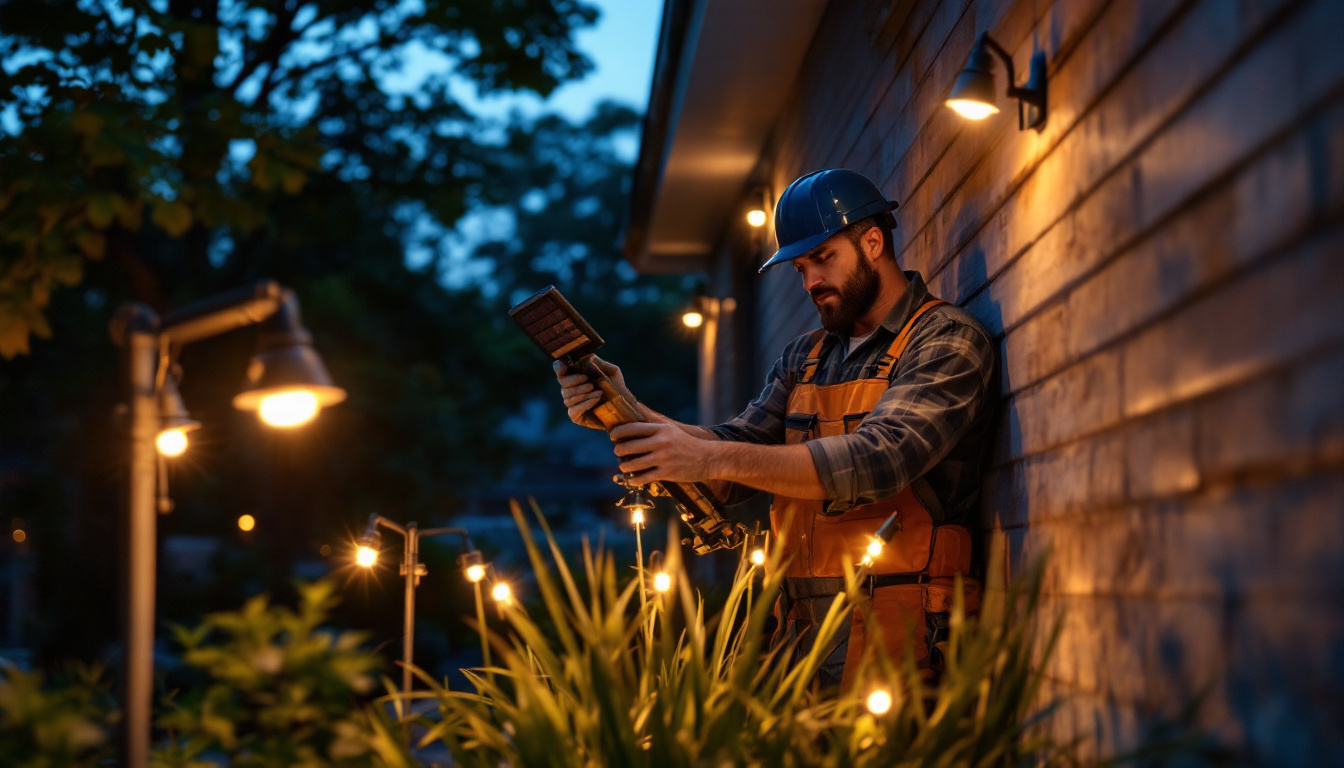
Discover how solar lights can revolutionize the work of lighting contractors by saving time and reducing costs.
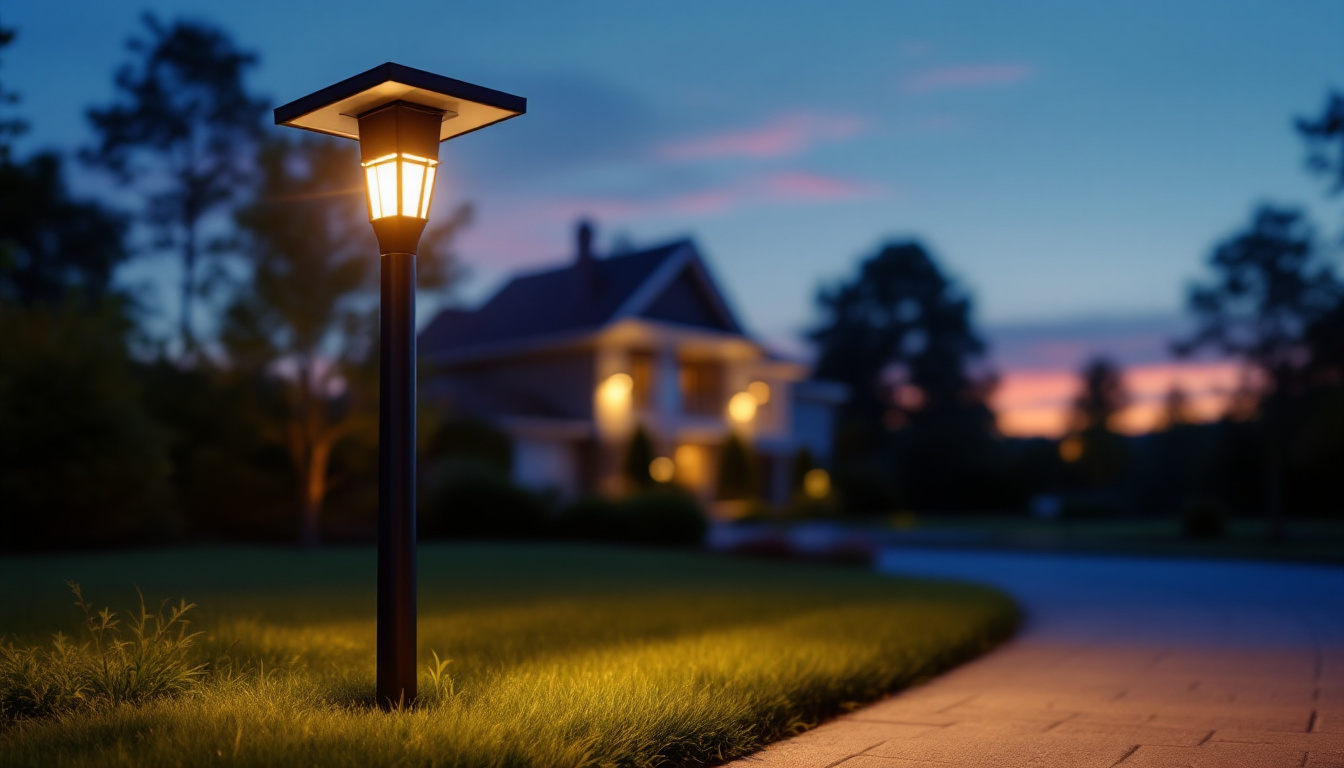
Explore the innovative world of solar driveway light posts and discover how lighting contractors can tackle common challenges.
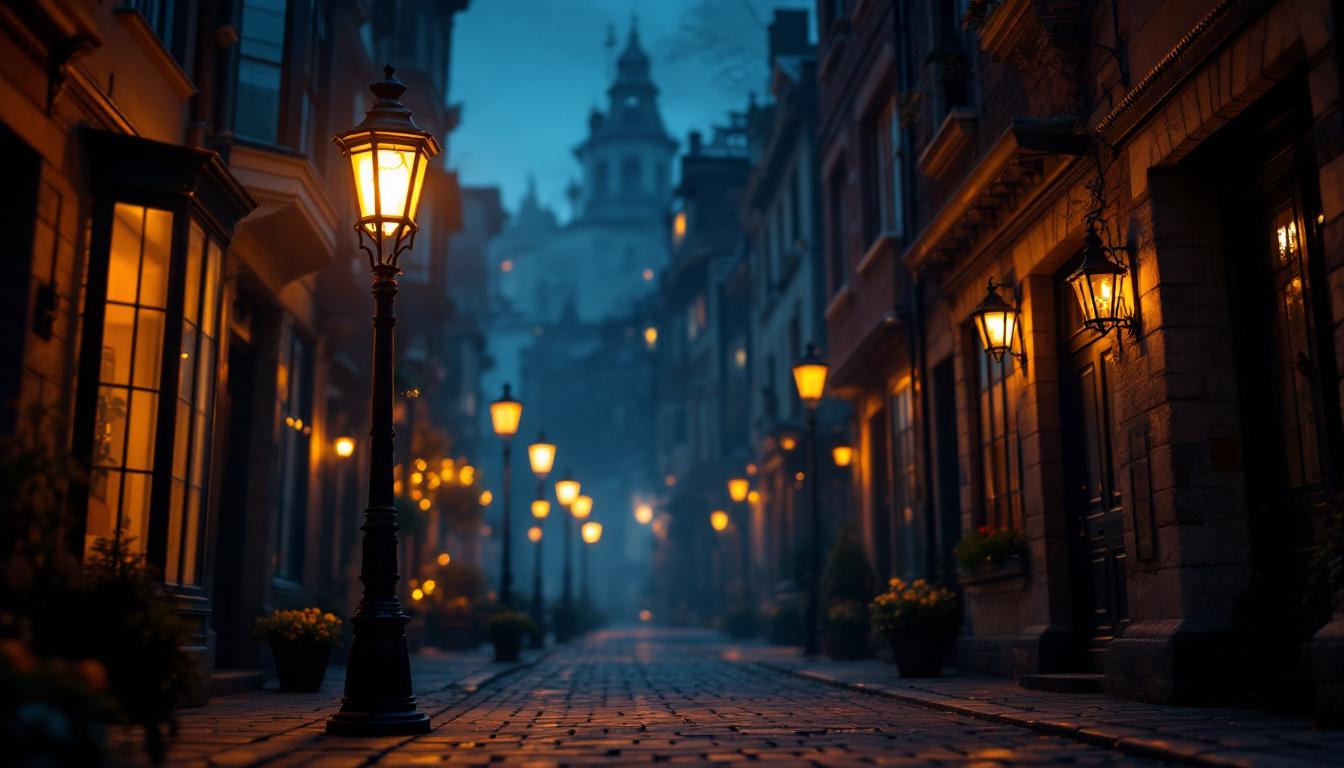
Discover when gas lighting was invented and learn key insights from lighting contractors.